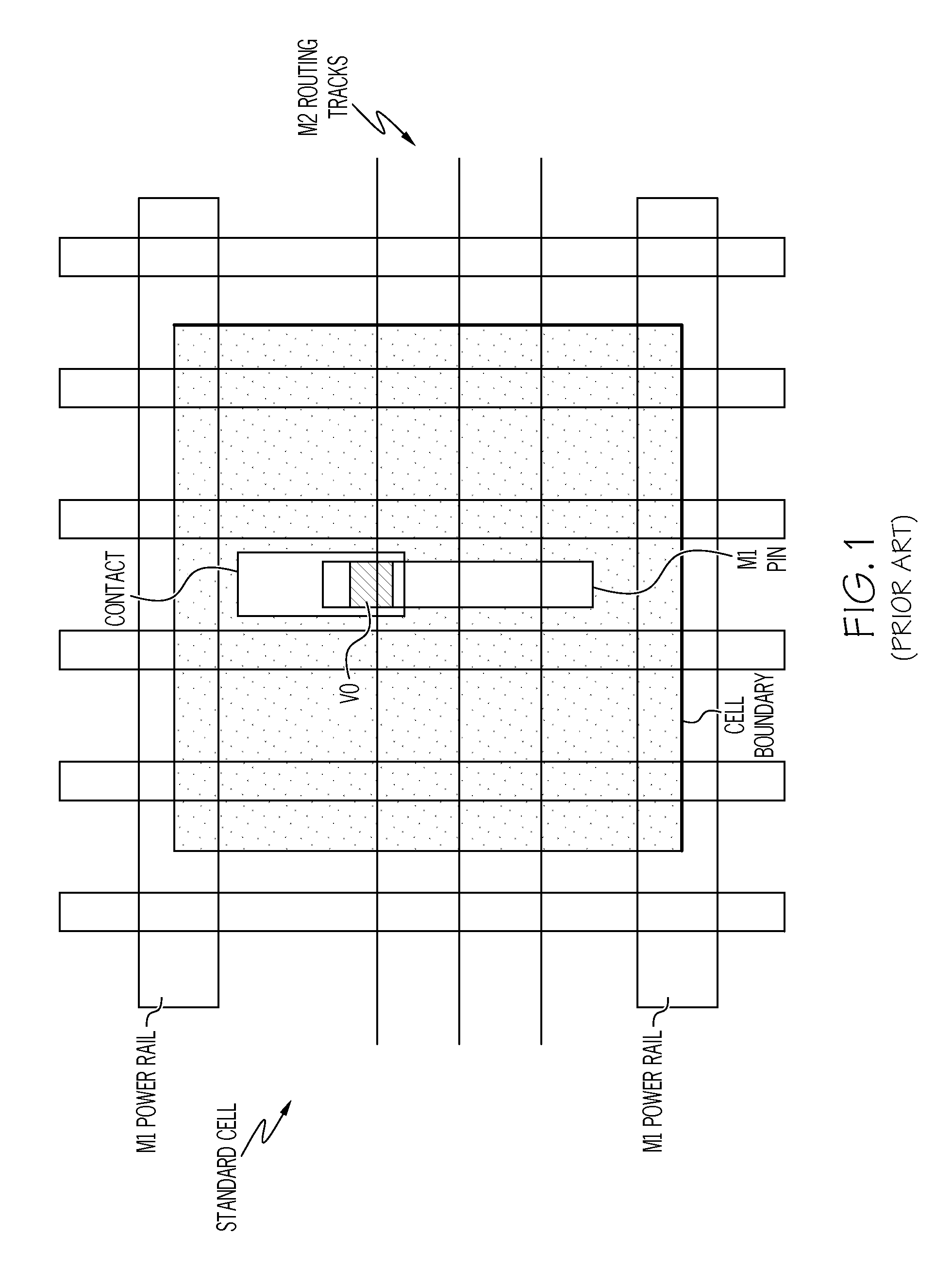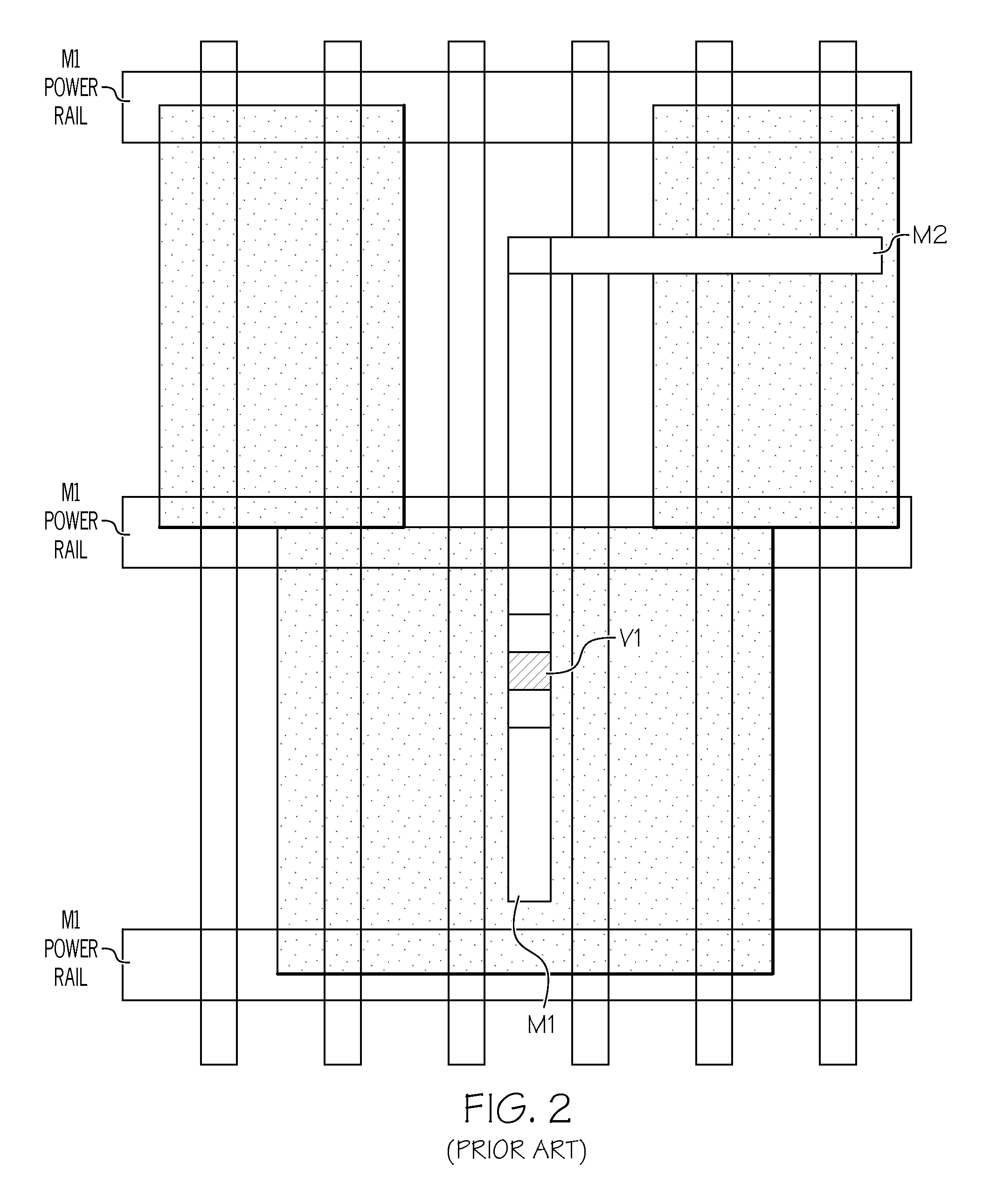Standard cell connection for circuit routing
a circuit routing and standard cell technology, applied in the field of integrated circuit (ic) cell design, can solve the problems of inefficiency of bending mb>2/b> wires and impossible cross-power-rail bending, and achieve the effect of improving routing efficiency and chip scaling
- Summary
- Abstract
- Description
- Claims
- Application Information
AI Technical Summary
Benefits of technology
Problems solved by technology
Method used
Image
Examples
Embodiment Construction
[0019]Exemplary embodiments will now be described more fully herein with reference to the accompanying drawings, in which exemplary embodiments are shown. Described are methods and techniques used for an improved standard cell connection for circuit routing. Specifically, provided is an IC device having a plurality of cells, a first metal layer (M1) pin coupled to a contact bar extending from a first cell of the plurality of cells, and a second metal layer (M2) wire coupled to the contact bar, wherein the contact bar extends across at least one power rail. By extending the contact bar into an open area between the plurality of cells to couple the M1 pin and the M2 wire, routing efficiency and chip scaling are improved.
[0020]It will be appreciated that this disclosure may be embodied in many different forms and should not be construed as limited to the exemplary embodiments set forth herein. Rather, these exemplary embodiments are provided so that this disclosure will be thorough and...
PUM
 Login to View More
Login to View More Abstract
Description
Claims
Application Information
 Login to View More
Login to View More - R&D
- Intellectual Property
- Life Sciences
- Materials
- Tech Scout
- Unparalleled Data Quality
- Higher Quality Content
- 60% Fewer Hallucinations
Browse by: Latest US Patents, China's latest patents, Technical Efficacy Thesaurus, Application Domain, Technology Topic, Popular Technical Reports.
© 2025 PatSnap. All rights reserved.Legal|Privacy policy|Modern Slavery Act Transparency Statement|Sitemap|About US| Contact US: help@patsnap.com



